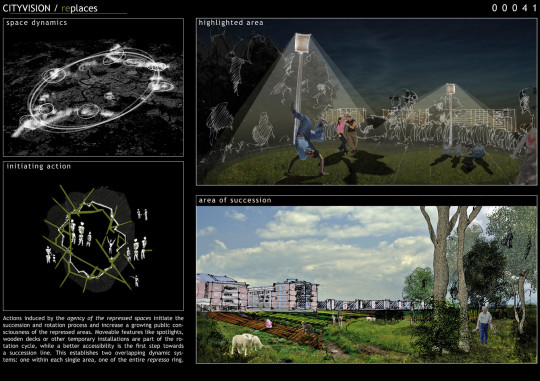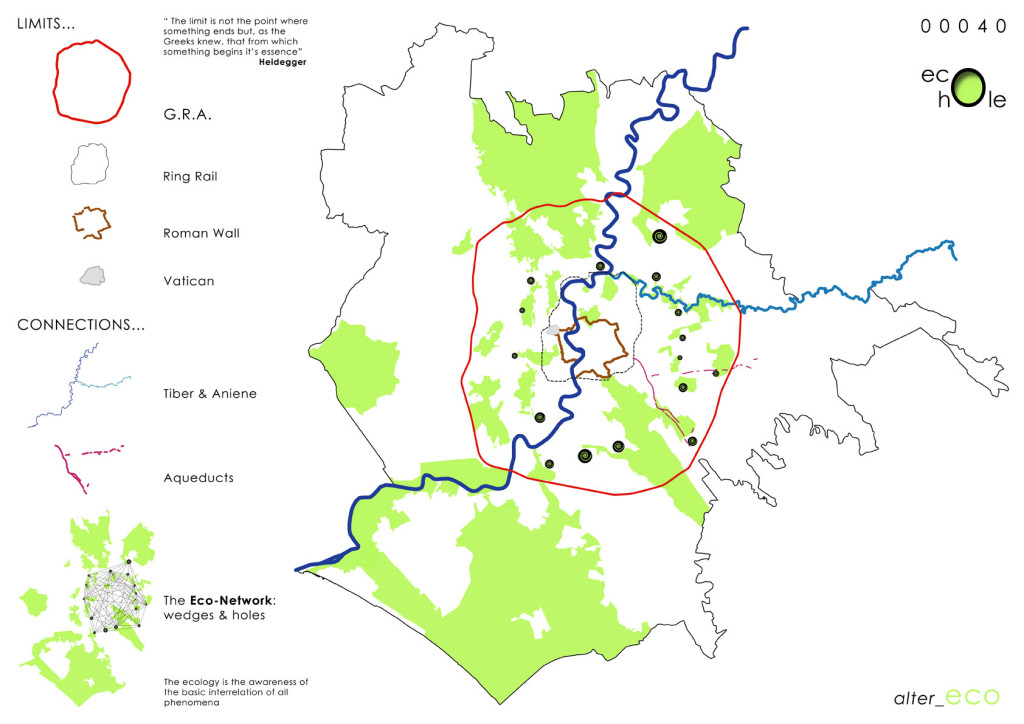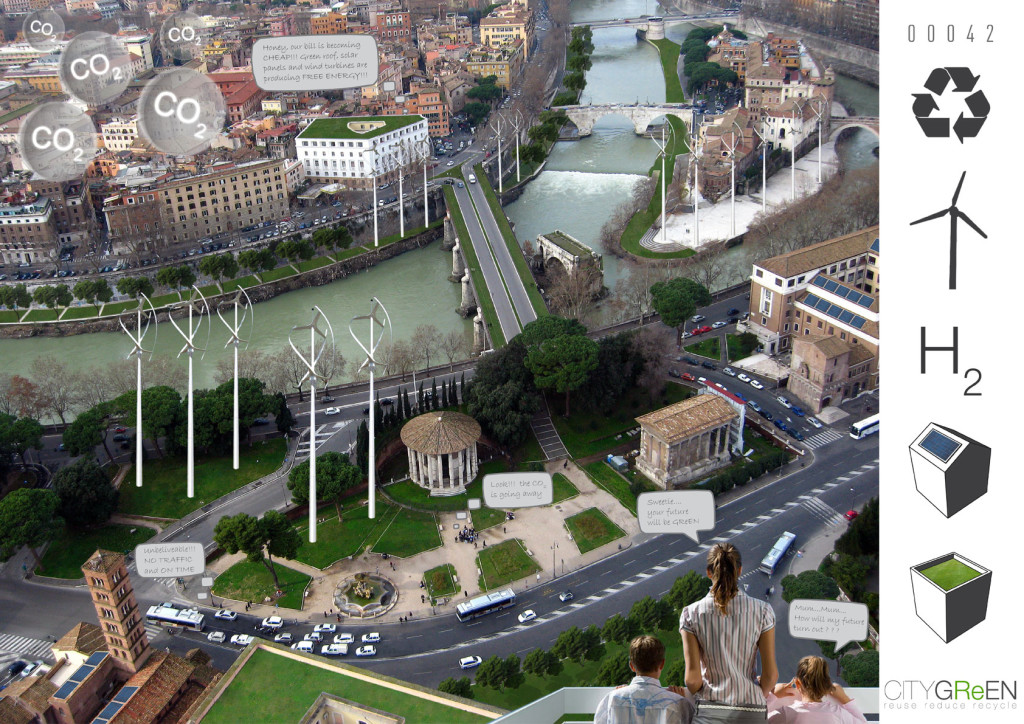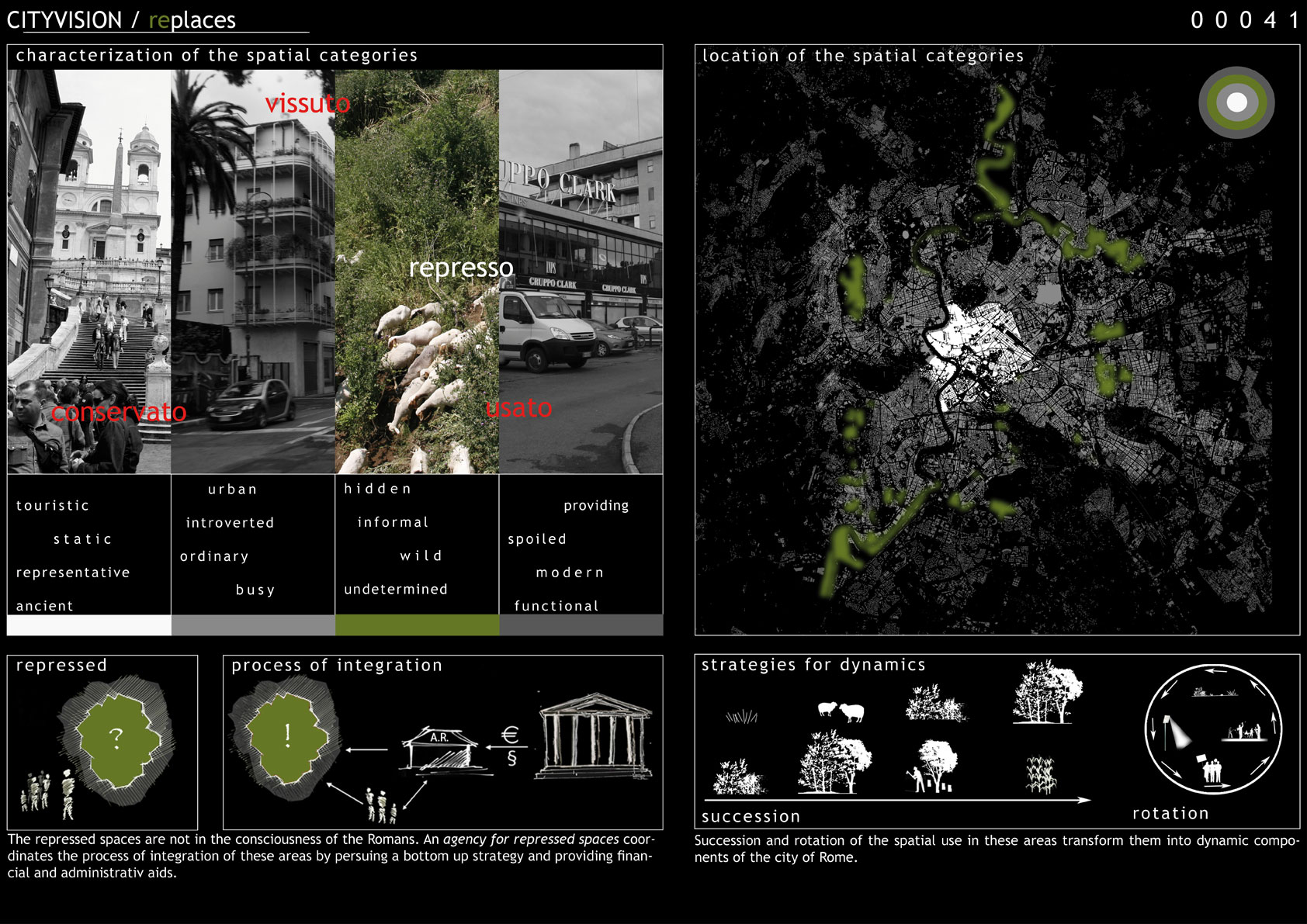Info:
Title: Replace - Code: 00041Contest: Rome / 2010
By: D. Czechowski / L. Ganzert / M. Gietl / T. Guezais / V. Luft / C. Mittag / M. Moskova / D. Riede / D. Riek / M. Schmoelz
Views: 2380 Likes: 0
Votes:
JUERGEN MAYER H. 0 FRANCESCO LIPARI2 FELIPE ESCUDERO1 FRANCESCO GATTI 4 MICHAEL CATON 52.4
Replace

Perspectives and observations
In our point of view the main structures withinRomeare characterized by strict boundaries. Those features create a very static image of the city. Just as everything would have been and will be always there.
When it comes to necessary changes, the people seem to be paralyzed by their own history. This is reflected by bureaucracy and cultural requirements, even when conducting the smallest intervention. The patrimony is always given priority; the needs of common people are mostly disregarded. The discussions about a more convenient, more functional everyday life are neglected. There is little room for ideas, for the new.
Spatial categories and their characteristics
In our perspective, the whole area of the city could be divided into the following four categories. In total they form something similar to concentric, partly existing rings.
- conservato: Elements within this category are generally conserved and presented to the international public. Naturally many of these places would have turned into ruins long ago, if they would not be restored and maintained constantly with high effort. So in total this central sector of the city appears today as one big museum: Look at it, don’t use it!
- vissuto: Processes of change are possible, but they are allowed only in predetermined fashions. There is a certain room given for utilization: Services, restaurants, offices. If you are looking for the Romans of today, it is most likely to find them there.
- represso: Areas belonging to this “secret” areas are generally neglected and nearly invisible for the spectator. Leaving common prejudices aside, these urban wastelands have also many positive aspects. Free of greater building structures and soil sealing, these areas are often still quite natural. The way of utilizing them is mostly informal, if not illegal. You will find creative sportsmen there as well as illegal immigrants.
- usato: This ring is not typical forRome, as you will find it around nearly every modern European metropolis. It is characterized by great buildings, empty spaces in between, and a lot of infrastructure – everything we need for our daily life, but what is too big or not attractive enough for the dense, urban cores. Space is simply used, not celebrated, maintained or hidden.
Potentials of the “represso”
They have a high value for us, since withdrawn, halcyon places are a rare treasure within a dense city likeRome. In contrast to the very static “conservato” and the functional, also somehow static “vissuto” and “usato”, they show a high degree of dynamic and flexibility. A lack of regulations and cultural heritage creates a feeling of easiness. The colosseo will attract foreigners, but the places of the “represso” will surprise the Roman people.
Talking about nature in the city, these places have not only a wild appearance, but also many ecological functions of a wild place, since there is little soil sealing and disturbance of wildlife. And: You don’t have to pay to get in!
So these characters have to be preserved, for attaining attractive open spaces, where priorities are others than world heritage status. There won’t be paralyzing regulations, no long-term buildings, but the possibility for a new, innovative utilization of space. The motto for important decisions is “bottom-up”, not “top-down”.
Strategies
For accomplishing these aims, our project shows two strategies. These are based on dynamic, changing processes which are contrasting the static image of the city.
- Dynamic by succession: With time processing, the condition of the space will change. The initial condition will be transformed into a succession by human usage. Space will react to the needs of man, so there is no need for regulations. The areas could be used for informal forestry, recreation, horticulture, pasture etc. This ensures a constant transformation of their appearance.
- Dynamic by rotation: Within the “represso” certain space-related actions will take place and then start to rotate and stimulate future usage. This could be a way to present especially the small and forgotten elements of this sector. Temporary and movable features like spotlights, wooden decks and other installations will make these places interesting for unusual activities. This would be another dynamic component inRome’s previously static structure.
Realization
Our strategies could be realized according to the “bottom-up-principle”. The formerly repressed areas will be there for the wishes and concerns of the people, as well as for the compensation of the deficiencies of the other spatial categories. For the strategic coordination an “Agenzia del represso” should be formed. This agency seeks the dialogue with the people and initiates a growing public consciousness and interest for the repressed spaces. Furthermore it will raise and distribute funds, and realize certain interventions and projects.
Do you have requests reaching beyond common horizons? Your local Agenzia per spazi repressi will make it happen. Within the city.







